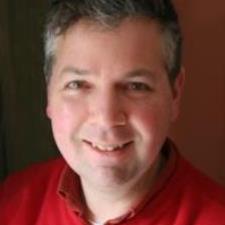

Featured Review:
Best statistics teacher I've ever had
Jillian, 2 lessons with PeterPeter is a lifesaver! I needed statistics help with my Master's thesis, and he was able to quickly understand the data I'm working with, suggest statistical tests that would be a better fit, and explain these tests in a very easy-to-understand manner! His teaching style helped me understand stats more quickly than any professor I've ever had. He was also able to identify certain biases and where the statistical results might be misleading, which helps me avoid several tough questions that...
Perhaps I can help! I am a math/statistics/physics/data science/software development tutor based in Portland ME and Cambridge MA. If you are in greater Portland or greater Boston, please consider me for help with math from the basics to calculus to beginning and advanced statistics, ODE/PDEs, linear algebra, time series analysis or any other topic of applied math. I can help with high school or college level physics (I have a PhD in physics), general data science (I've made a career...
Loading...
Peter has provided examples of their subject expertise by answering 5 questions submitted by students on Wyzant’s Ask an Expert.
Best statistics teacher I've ever had
Peter is a lifesaver! I needed statistics help with my Master's thesis, and he was able to quickly understand the data I'm working with, suggest statistical tests that would be a better fit, and explain these tests in a very easy-to-understand manner! His teaching style helped me understand stats more quickly than any professor I've ever had. He was also able to identify certain biases and where the statistical results might be misleading, which helps me avoid several tough questions that could have arisen during my thesis defense. He is a fantastic tutor and I recommend him to everyone!
Jillian, 2 lessons with Peter
Very experienced and Knowledgeable!
Peter is highly skilled and knowledgeable in the area of optimizations. He possesses a wealth of expertise that makes him the go-to lecturer when you find yourself facing challenges or obstacles. His depth of knowledge and ability to explain complex concepts in a clear and concise manner make him an invaluable resource for anyone seeking guidance in this field. Peter's passion for teaching and his commitment to helping others succeed make him a trusted and respected mentor.
Nelson, 2 lessons with Peter
A knowledgeable tutor and a joy to speak with
As a beginner with R, I was struggling a bit with creating complex functions. I understood how to make simple ones (converting cm to inches, for example), but I couldn't get complex, multi-step functions to work. In an hour and 15 minutes, Peter not only helped me complete the assignment that troubled me, but also helped me understand what I was doing wrong and showed me some neat tricks to debug my code when I have problems I don't understand in the future. I would recommend Peter's services to anyone who is struggling with R.
Daniel, 1 lesson with Peter
Knowledgeable and informative
Peter helped me go over my cluster analysis and really helped me to better understand the process and results. We also had a great conversation on future academic paths and opportunities. I'd highly recommend Peter as a tutor and advisor.
John, 1 lesson with Peter
Accessible explanations!
Peter demonstrates the intuition behind concepts. Solving becomes simpler when Peter is providing foundational knowledge. He helped me with my graduate school coursework on Bayesian Statistics.
Anne, 1 lesson with Peter
Knowledgeable and patient tutor
Peter is extremely knowledgeable with the subject. Very patiently, step-by-step he worked through each problem. He understood the urgency of the situation and made time the very next day. Just to have a tutor who is proficient is very reassuring. Very methodical and makes the student understand the concepts. Highly recommended.
Jeena, 5 lessons with Peter
Superb data scientist
Peter is my go-to guy for data science; he provides clear explanations and is very responsive. He is very well versed in both R and Python. Highly recommended!
Simran, 5 lessons with Peter
Outstanding tutor
Quant. Peter L. is the best tutors I have ever had. I learn so much, thanks to him! He is patient and understandable. He has so much knowledge and experience. What a brave person. I am so pleased I got to know him!
Katherine, 4 lessons with Peter
A Real Teacher!
I’m a Master’s international student who never had an Econometrics course before. I have struggled with the course for a while as the course’s pace was too fast for me. I met Peter twice before my midterm and he actually explained almost the entire course in two sessions! He illustrated the concepts in real life easy to understand examples. He was patient, understanding, and he was also funny. Thanks to Peter, I actually got an A+ on my midterm!
Bashera, 2 lessons with Peter
Knowledgeable and helpful tutor
Peter helped me with Econometrics, he helped me by providing answers to my questions both by words and numbers, so I have more options to absorb the material that way.
Rafael, 3 lessons with Peter